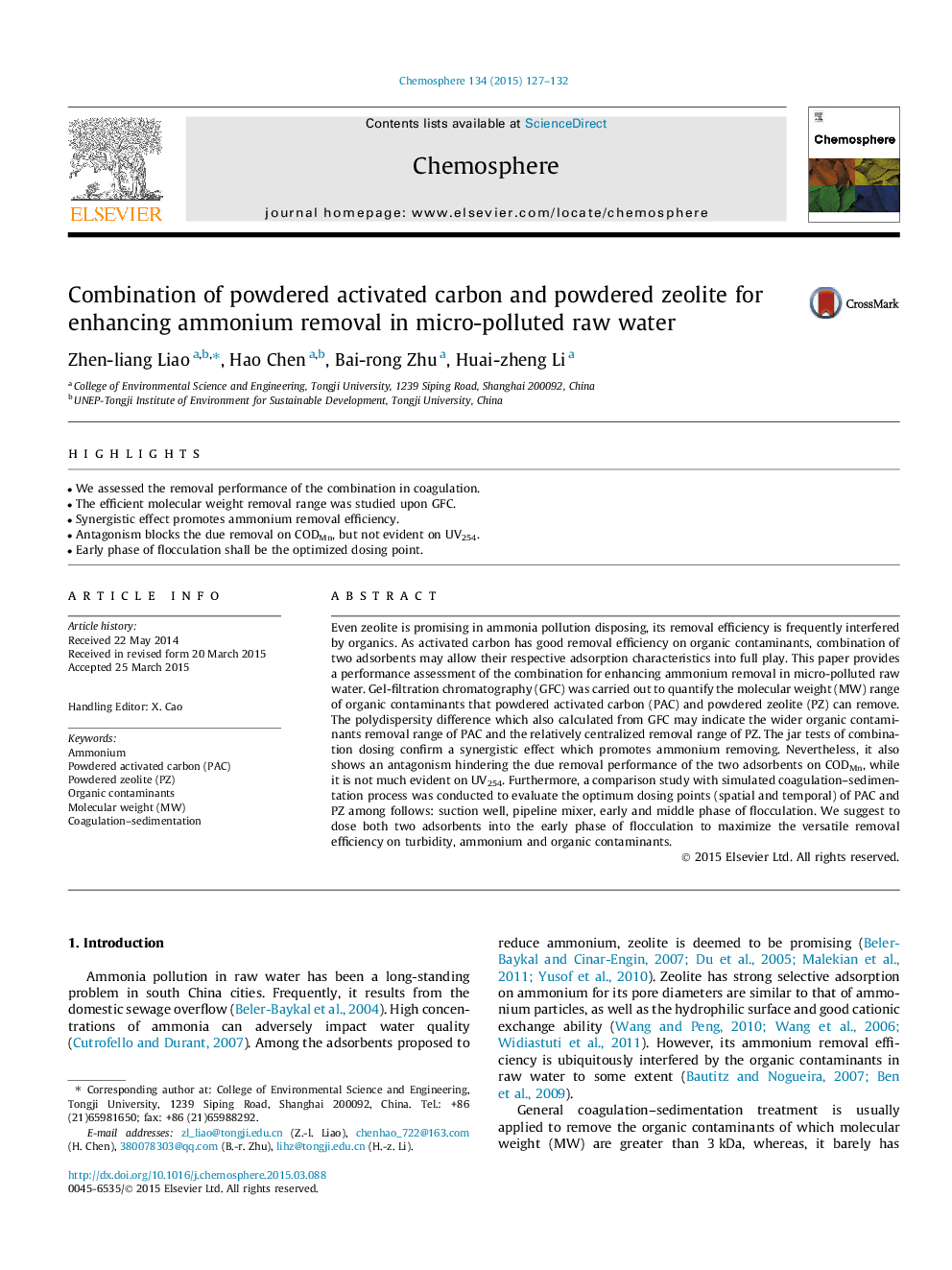| Article ID | Journal | Published Year | Pages | File Type |
|---|---|---|---|---|
| 6307629 | Chemosphere | 2015 | 6 Pages |
Abstract
Even zeolite is promising in ammonia pollution disposing, its removal efficiency is frequently interfered by organics. As activated carbon has good removal efficiency on organic contaminants, combination of two adsorbents may allow their respective adsorption characteristics into full play. This paper provides a performance assessment of the combination for enhancing ammonium removal in micro-polluted raw water. Gel-filtration chromatography (GFC) was carried out to quantify the molecular weight (MW) range of organic contaminants that powdered activated carbon (PAC) and powdered zeolite (PZ) can remove. The polydispersity difference which also calculated from GFC may indicate the wider organic contaminants removal range of PAC and the relatively centralized removal range of PZ. The jar tests of combination dosing confirm a synergistic effect which promotes ammonium removing. Nevertheless, it also shows an antagonism hindering the due removal performance of the two adsorbents on CODMn, while it is not much evident on UV254. Furthermore, a comparison study with simulated coagulation-sedimentation process was conducted to evaluate the optimum dosing points (spatial and temporal) of PAC and PZ among follows: suction well, pipeline mixer, early and middle phase of flocculation. We suggest to dose both two adsorbents into the early phase of flocculation to maximize the versatile removal efficiency on turbidity, ammonium and organic contaminants.
Related Topics
Life Sciences
Environmental Science
Environmental Chemistry
Authors
Zhen-liang Liao, Hao Chen, Bai-rong Zhu, Huai-zheng Li,
